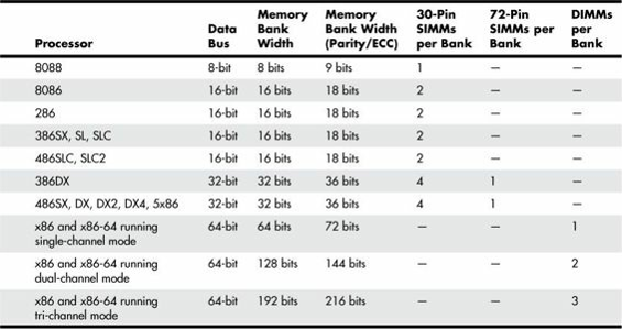Hardware Reference
In-Depth Information
As you can see, with a little detective work, you can determine the size, speed, and type of a memory
module—even if the module isn't marked, as long as the markings on the memory chips themselves
are legible.
Tip
If you are unable to decipher a chip part number, you can use a program, such as CPU-Z
(
www.cpuid.com
)
or HWiNFO (
www.hwinfo.com
) to identify your memory module, as well
as many other facts about your computer, including chipset, processor, empty memory sockets,
and much more.
Memory Banks
Memory chips (DIPs, SIMMs, SIPPs, and DIMMs) are organized in banks on motherboards and
memory cards. You should know the memory bank layout and position on the motherboard and
memory cards.
You need to know the bank layout when adding memory to the system. In addition, memory
diagnostics report error locations by byte and bit addresses, and you must use these numbers to locate
which bank in your system contains the problem.
The banks usually correspond to the data bus capacity of the system's microprocessor.
Table 6.14
shows the widths of individual banks based on the type of PC.
Table 6.14. Memory Bank Widths on Various Systems
DIMMs are ideal for Pentium (and higher) systems because the 64-bit width of the DIMM exactly
matches the 64-bit width of the Pentium processor data bus. Therefore, each DIMM represents an
individual bank, and these can be added or removed one at a time. Many recent systems have been
designed to use matched pairs or triples of memory modules for faster performance. So-called “dual-
channel” and “tri-channel” designs treat two or three matched modules as a single bank of memory.
The physical orientation and numbering of the SIMMs or DIMMs used on a motherboard are arbitrary
and determined by the board's designers, so documentation covering your system or card comes in
handy. You can determine the layout of a motherboard or an adapter card through testing, but that







